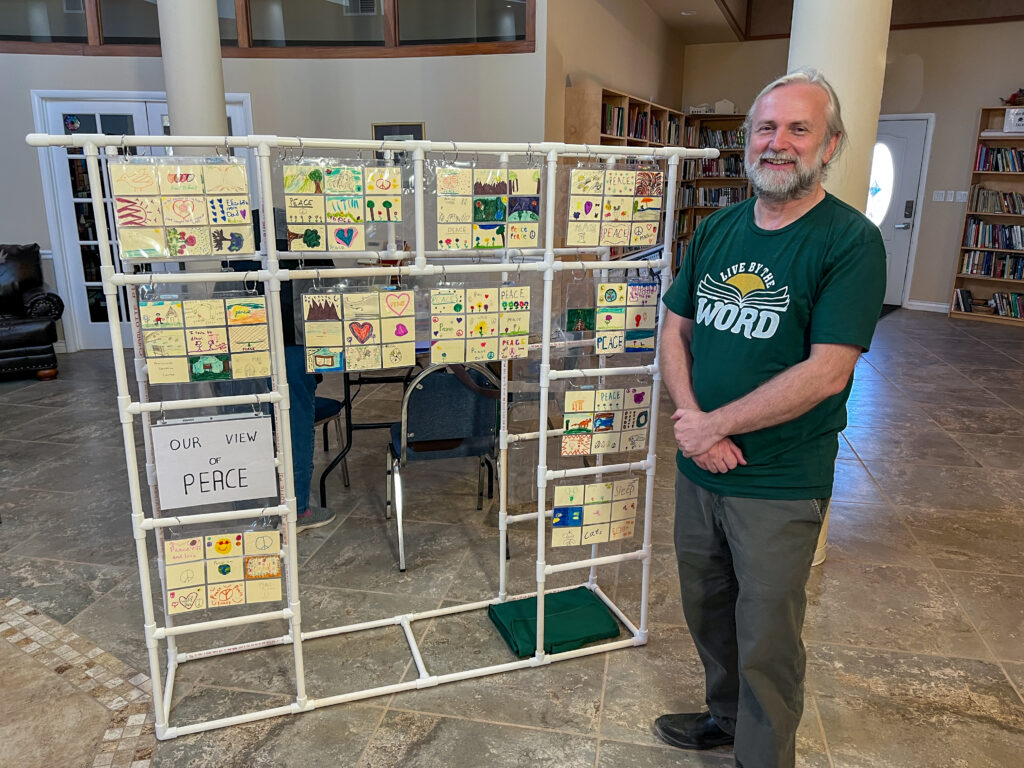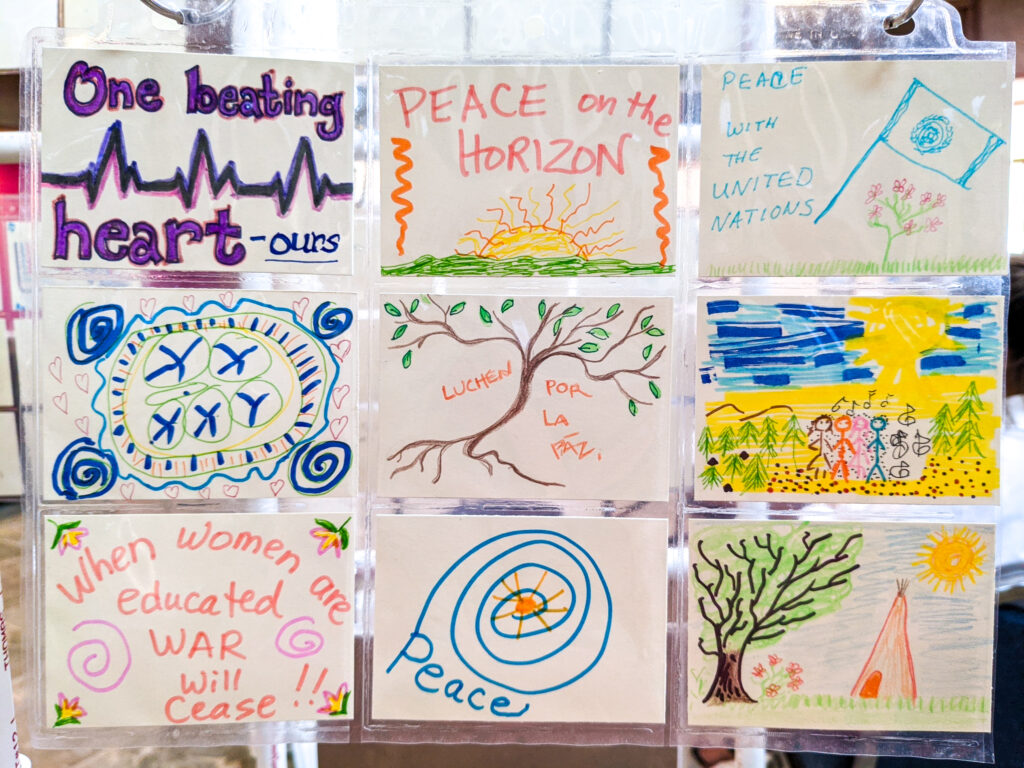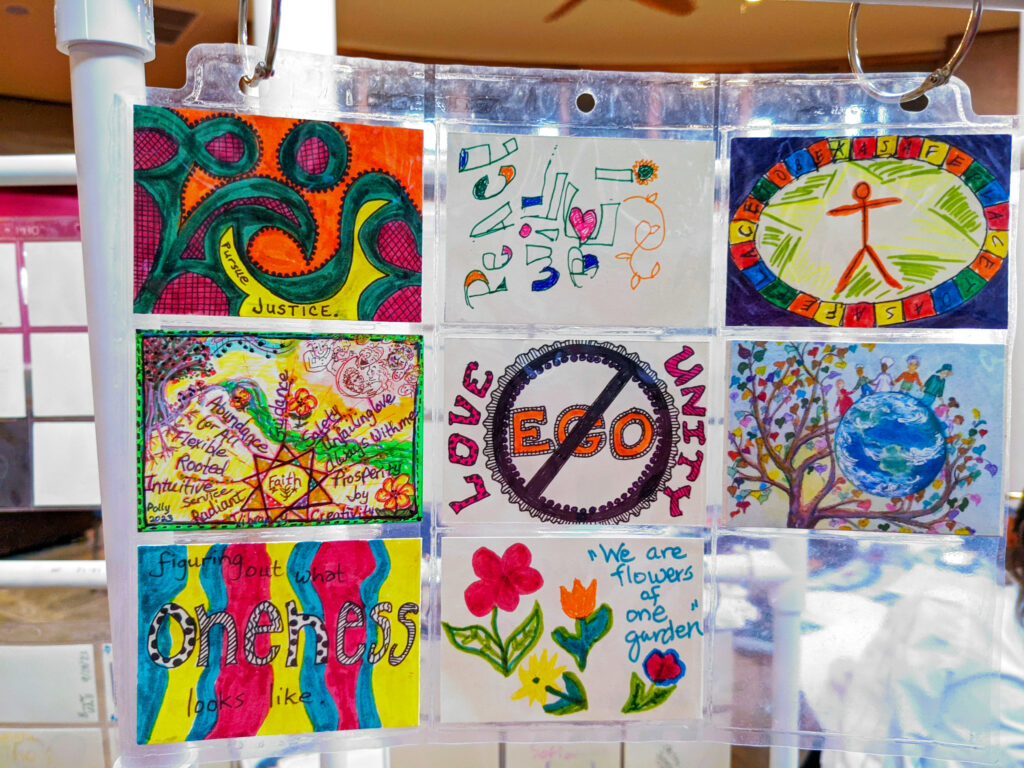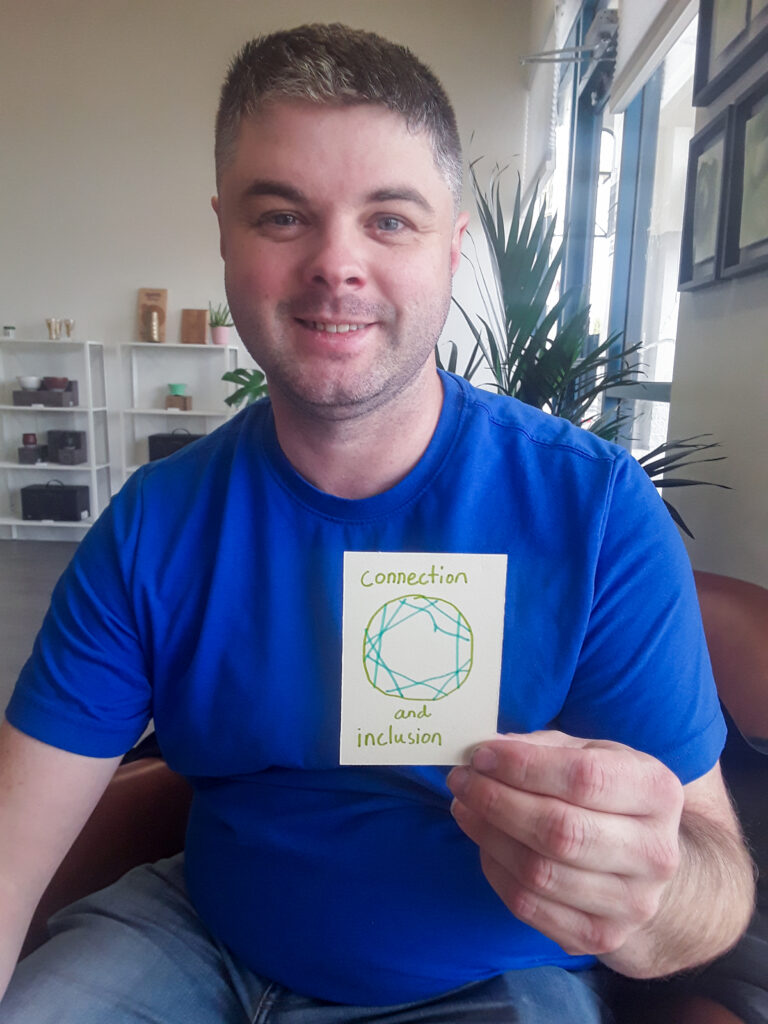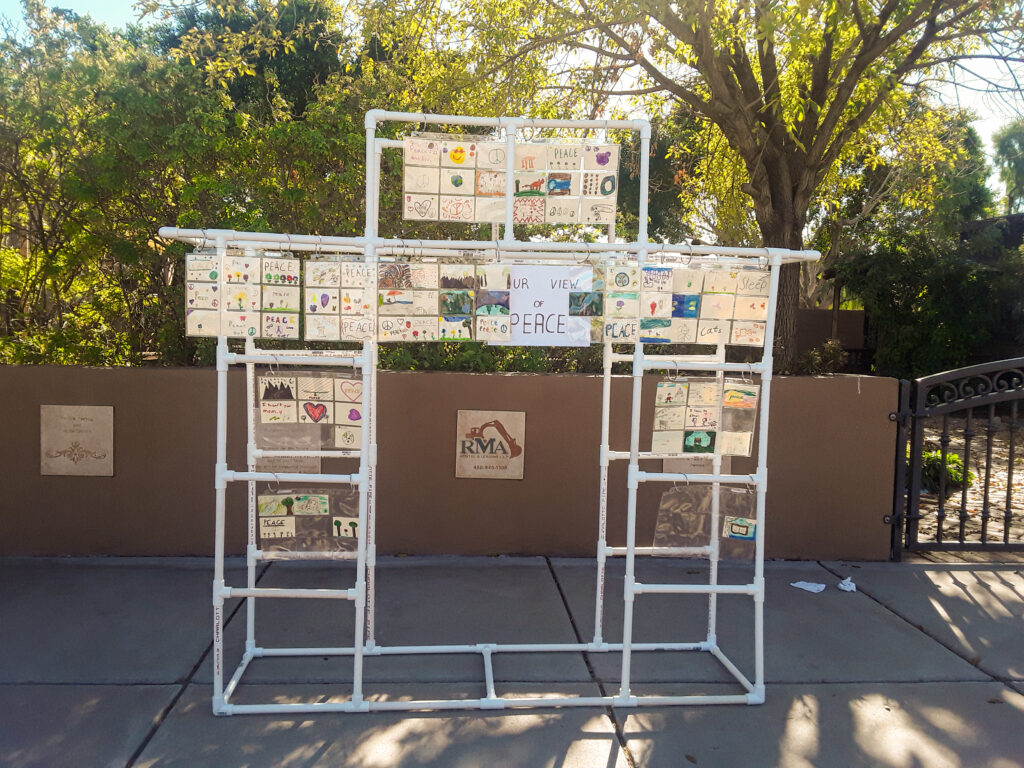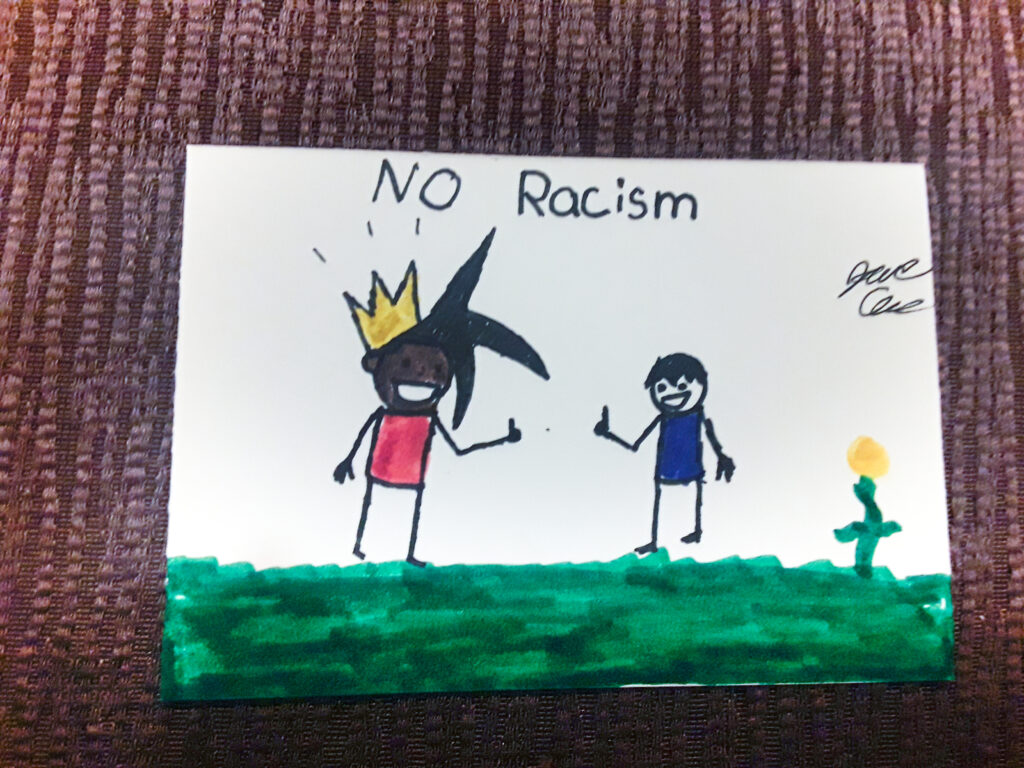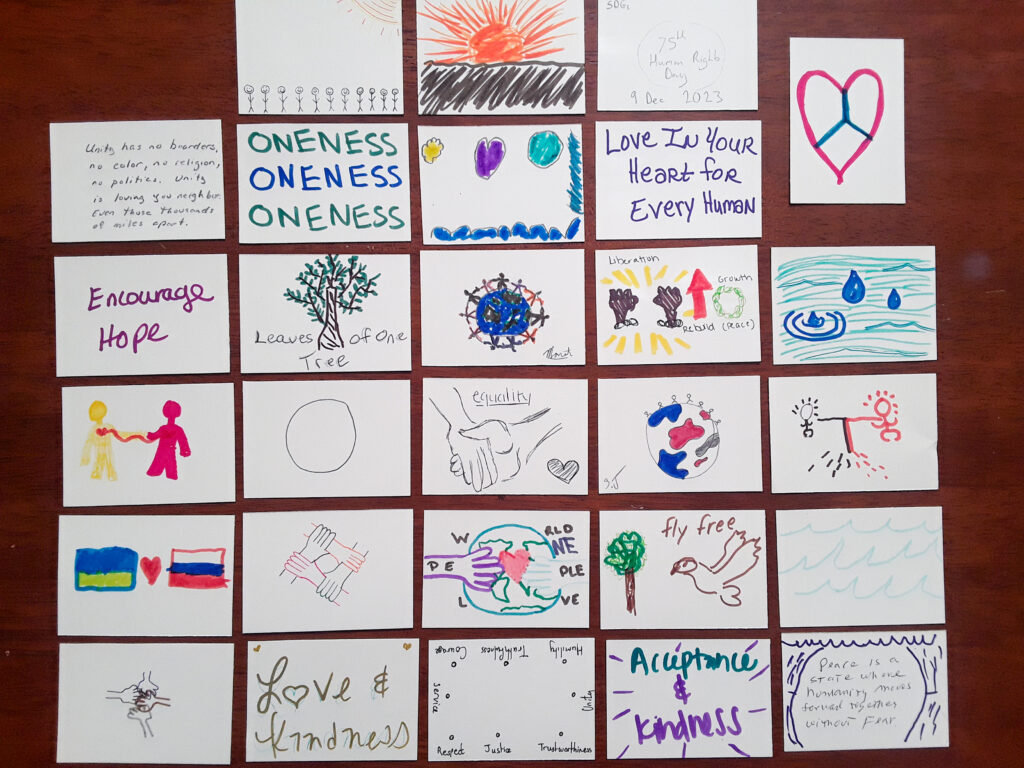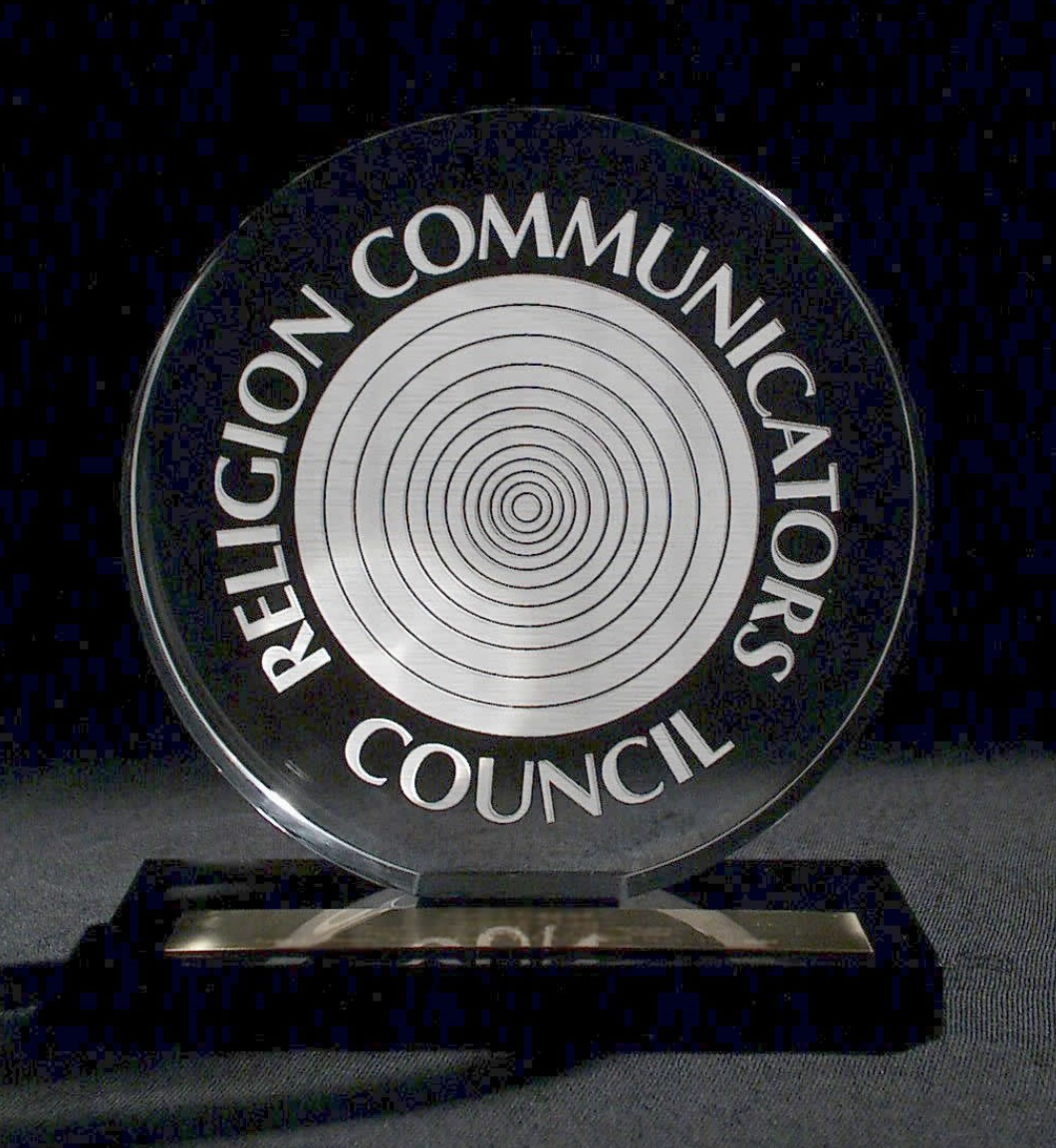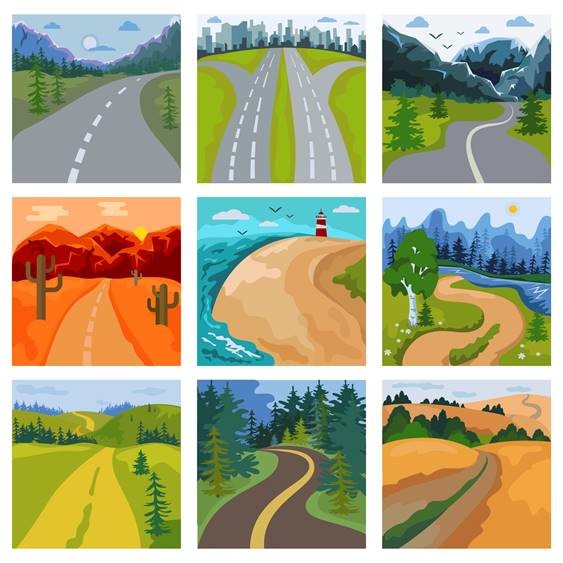
Artist elicits big conversations by inviting small works of art
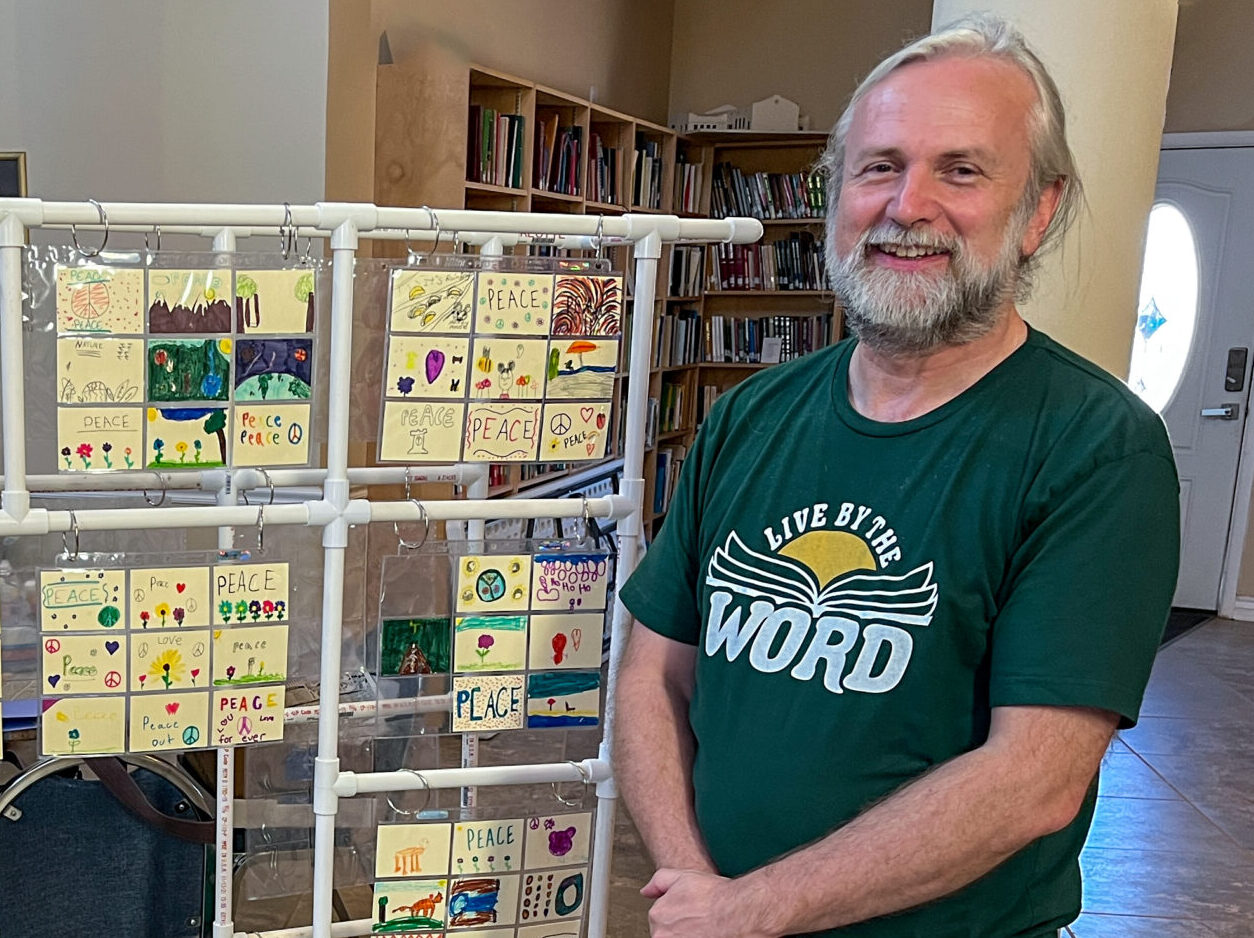
By Michelle Goering
I recently met a Bahá’i who is using art in diverse settings to advance spiritual conversations and build new relationships. Adrian Black calls his initiative “Your View of Peace.” He says the seed for this collaborative and ongoing art and social discourse project sprouted from converging ideas.
“I’ve always liked art and using it in all sorts of places,” says Black, a Bahá’i with an engaging personality, large gestures and a British accent.
“At the National Treasurer’s Forum in 2018, there was a session about using art collectively to investigate the Bahá’i Writings. The idea was new to me, but I liked it. Making art collaboratively around spiritual topics is okay to do—in fact we should be doing it.”
Black says at the time he was into artist trading cards, in which artists create, swap, and collect small (2 ½” x 3 ½”) pieces of art. He found a group on the internet and enjoyed connecting with others monthly to trade art pieces.
Around the same time, the January 18, 2019 letter from the Universal House of Justice on the Advancement of World Peace was released, and Black says he was moved by its message:
“Sensitized as they are to the importance of harmony and the fruitlessness of conflict, the followers of Bahá’u’lláh seek to cultivate those conditions that are most conducive to the emergence of unity in any setting. We are heartened to see the believers expanding their efforts to participate in the discourses of society—especially those friends who, in their professional capacity, are able to contribute to discourses directly related to peace.”
The letter also traces the history of peace efforts over the previous hundred years, and Black says he was shocked by the realization that world progress toward peace seemed to be going in the wrong direction at that moment.
He recalled ‘Abdu’l-Bahá’s words, “When a thought of war comes, oppose it by a stronger thought of peace.” Black says he wanted to find a way to use art to contribute to positive conversations on peace.
Black’s home in Gilbert, Arizona, is on the edge of a busy public park. He took some blank artist trading cards and colored pens to the park. “I’m an artist,” he told a group of young people there. “Would you like to do an art project with me?” The youth seemed open and enthusiastic. “Draw your view of peace,” Black suggested.
They sat with him around a park table next to the Peace Pole the Bahá’is of Gilbert had erected years before. Written on it is “May Peace Prevail on Earth” in several languages.
The youth shared that they were members of the Church of Jesus Christ of Latter-day Saints. They chatted as they drew, and were curious about each other’s view of peace.
Black collected the finished cards and brought them to others at the park to ask if they wanted to add their own images of peace to the collection. At the end of the first day, Black had about forty pieces of art, and the project was launched.
Black says he wasn’t new to the uses of art for affecting social change; he’d been working with Millet House in Mesa, Arizona, a small gallery assisting and serving homeless people through art. They’d also been using artist cards, so a few days after the park experience, Black spent a day at Millet House with a group focused on making art around peace, which led to conversations about the Baha’i Faith.
Buoyed by the energy of these first experiences, Black next brought the project to an ongoing community prayer gathering. He again handed around cards and asked each participant to share “your view of peace.” He says he’s used the same request, worded in the same way, with each group and person over the last four years. And each time, he also shares previous participants’ work with the new artists.

Black keeps cards in plastic sleeves so they stay clean when passed around. Lively conversation and engagement with the topic emerges as people draw and examine each other’s work. Seeing the diversity of meanings of peace for others gives people new ideas.
As Black grasped the value of sharing the work with new groups, he built a freestanding frame of PVC pipe where he can hang hundreds of pieces for display when he travels with the project.
Covid slowed gatherings for a time, but soon Black turned his attention to the art-infused conferences on the Nine Year Plan held in early 2022, and these boosted the project further.
At the first Mesa Arizona Conference, “a little girl whose family is engaged in the community-building process drew three sisters running in the garden—that’s what she saw as peace.” And that moved him. “If kids are allowed to do that, to play in the garden, not worried about anything, safe, and happy—that’s what we all want.”
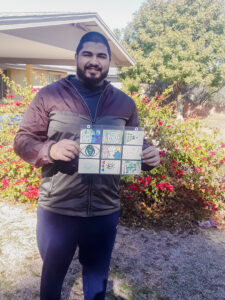
“At the Tempe Arizona Conference a guy who’d been at an art devotional a year before had done a little smiley face, and I brought it out, and he laughed so hard and said, ‘I can’t believe you saved that!’ but it was authentically him, and it affected those who were nearby. That inspired an invitation to bring the project to their junior youth group.”
Black was soon bringing “Your View of Peace” to a wider variety of settings: devotionals, junior youth groups, a local Montessori school, his wife’s book club, a table outside the public library, the local game store where he gets his card sleeves, and at an arts retreat at Desert Rose Bahá’i Institute, where I met him.
The art nurtures participants’ understanding and perspective when they see the other work that’s been done. The collection of cards helps viewers and participants build a bigger picture of peace than individuals may envision on their own. For example, one time a person drew a solitary deck chair and palm tree as his view of peace. His view was broadened when he saw his art next to others’. Lively conversation followed.
At the Montessori Education Center where Black teaches chess, he observed a staff member at the front desk doodling, and struck up a conversation about art. This led to an opportunity to try the project at the school in December 2022. Its resonance with students and teachers earned Black an invitation to return for the Parents Art Walk and display the project with student work at the end of the school year in May 2023. He now has an ongoing relationship with the institution.
Black has collected about 400 pieces of art so far. He says the project is versatile, and a tiny blank canvas is not overwhelming for those who don’t consider themselves artists. It doesn’t take much time, either, because of the small format.
While elevated conversations and relationship building are integral to the project, he says taking it into one-on-one settings is just as productive. “With individuals, I can get more of a conversation going. Groups may have their own agenda and plans. But at a coffee shop where I sometimes go, I’ve had individuals sit with me for an hour,” Black says.
When Black looks at the pieces collectively, the project has “a vast number of layers showing where peace originates.” It’s not just about military peace or the work of political leaders. “There are layers of individuals working together, families working together, communities working together,” he says. “And it’s partly about me learning about peace.”


